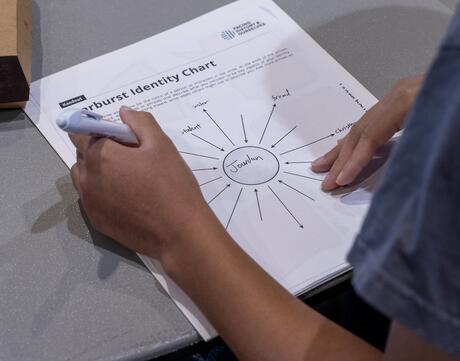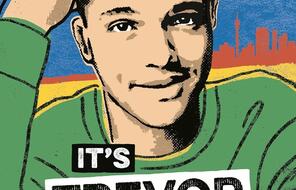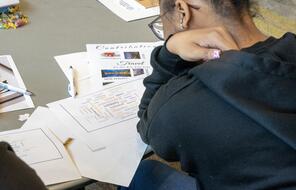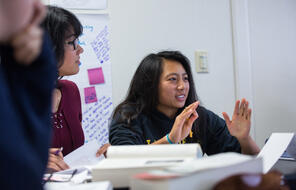
Negotiating Belonging in Trevor Noah’s Born a Crime
At a Glance
Language
English — USSubject
- English & Language Arts
Grade
7–8Duration
Two 50-min class periods- Culture & Identity
Overview
About This Lesson
Building on their work with Misa Sugiura’s short story “Where I’m From,” in this lesson, students will read a chapter from the young readers’ adapted edition of Trevor Noah’s memoir It’s Trevor Noah: Born a Crime, Stories from a South African Childhood. Growing up in Soweto under apartheid as the child of a Black mother and white father, Noah used language—Xhosa, English, Zulu, and Afrikaans—to cultivate his own sense of belonging in the segregated spaces he navigated in his neighborhood and schools.
To help students consider the relationship between identity and belonging, they will create identity charts for Trevor Noah and then do a close-reading activity with passages from the text that help them address the lesson’s guiding questions and draw connections to earlier lessons about values. Ultimately, this story is one of agency, in which a young Trevor Noah aligns his decisions to his personal values in order to create spaces where he feels a deep sense of belonging.
Preparing to Teach
A Note to Teachers
Before teaching this lesson, please review the following information to help guide your preparation process.
Lesson Plans
Day 1 Activities
Day 2 Activities
Homework
Materials and Downloads
Quick Downloads
Download the Files
Download allGet Files Via Google
Negotiating Belonging in Trevor Noah’s <em>Born a Crime</em>
Navigating Social Hierarchies
Belonging on Your Own Terms
Additional Resources
Unlimited Access to Learning. More Added Every Month.
Facing History & Ourselves is designed for educators who want to help students explore identity, think critically, grow emotionally, act ethically, and participate in civic life. It’s hard work, so we’ve developed some go-to professional learning opportunities to help you along the way.
Exploring ELA Text Selection with Julia Torres
On-Demand

Working for Justice, Equity and Civic Agency in Our Schools: A Conversation with Clint Smith
On-Demand

Centering Student Voices to Build Community and Agency
On-Demand

















